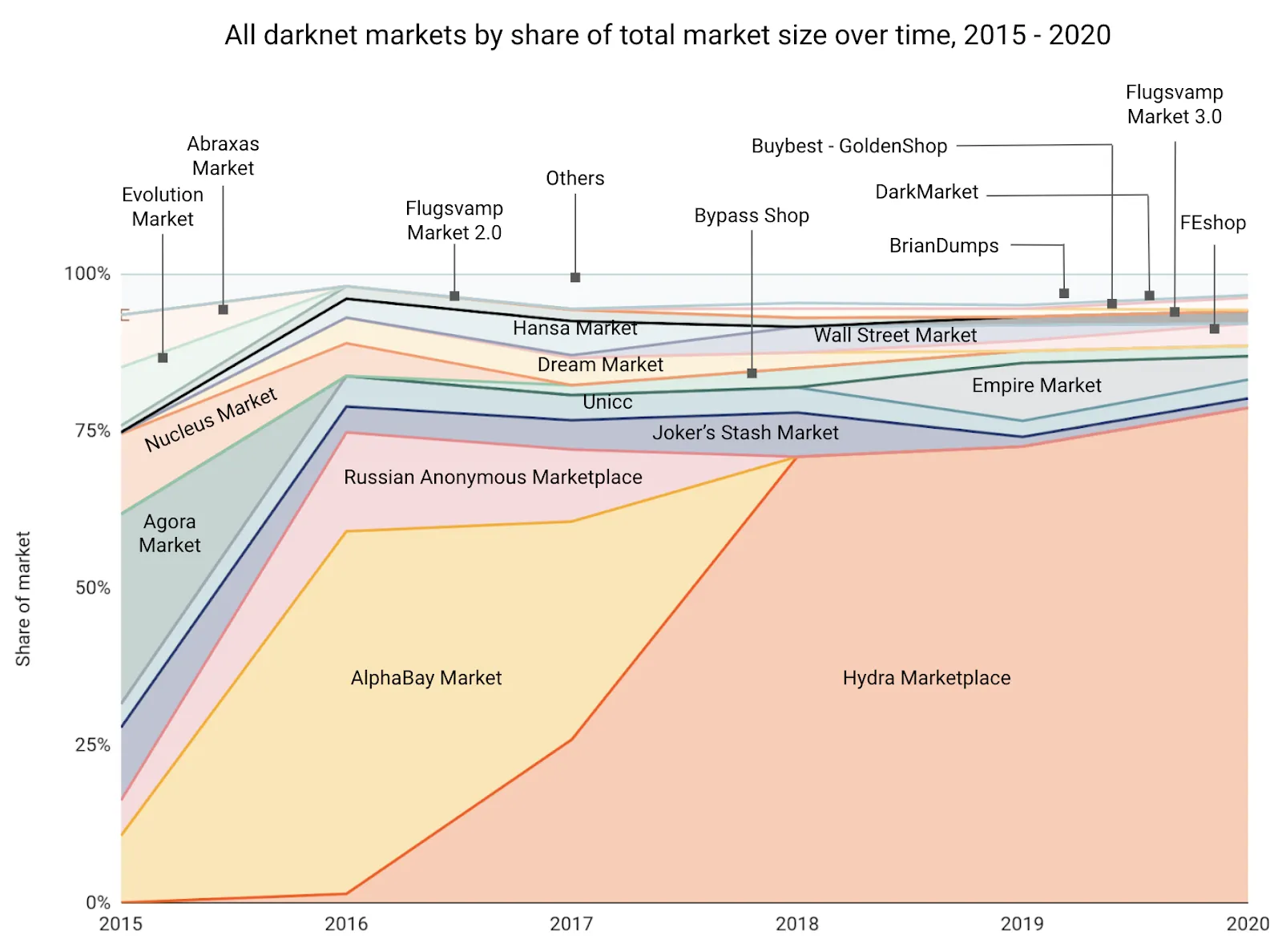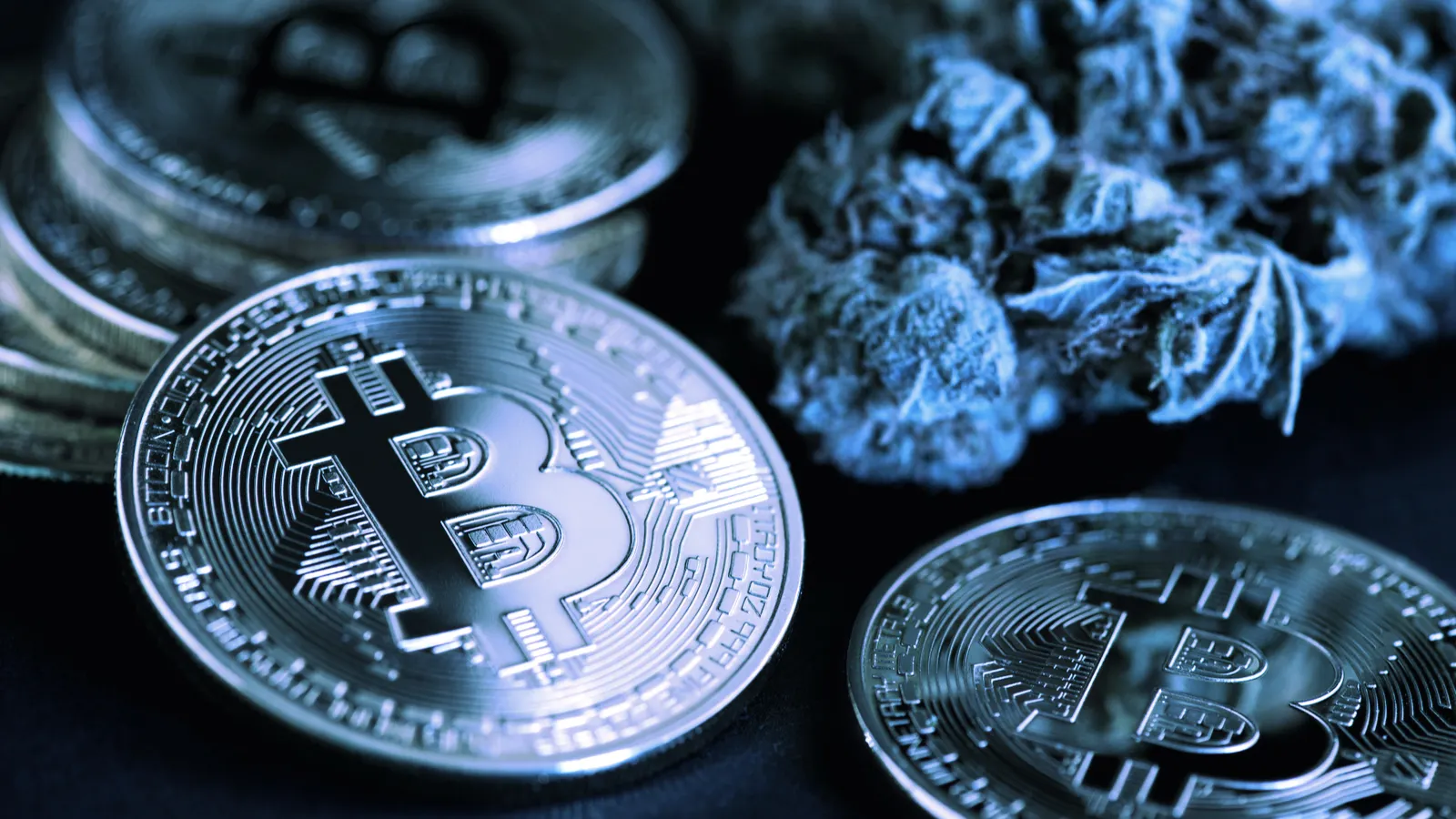In brief
- Darknet markets have earned $1.7 billion worth of cryptocurrencies in 2020, according to the latest report by Chainalysis.
- Eastern European platform Hydra was responsible for 75% of that figure.
- In English-speaking countries, personal data used for fraud was more popular than drugs on such marketplaces.
Over the course of 2020, darknet markets raked in a record $1.7 billion worth of cryptocurrencies in total—but one single platform was responsible for 75% of that figure, according to an extract of an upcoming report that was published by crypto forensics firm Chainalysis yesterday.
The number of individual purchases from darknet markets declined in 2020 and their revenue remained mostly flat compared to 2019. However, one of the platforms stood out—a darknet market called Hydra.
Enter Hydra
Not only Hydra was responsible for 75% of global darknet markets revenue in 2020, but it is somewhat unique in that it only serves Russian-speaking countries, the researchers discovered. At the same time, it is currently the largest platform of its kind in the world.
“Hydra is a big driver of Eastern Europe’s unique crypto crime landscape. Eastern Europe has one of the highest rates of cryptocurrency transaction volume associated with criminal activity and, thanks to Hydra, is the only region with a criminal service as one of the top ten entities sending cryptocurrency value to the region,” the researchers explained.

And the platform may eventually expand into English-speaking countries as well. To this end, Hydra even announced that it plans to raise $146 million via an initial coin offering (ICO) which will go towards creating Eternos, a global darknet market not limited to Eastern Europe. However, it looks like criminal enterprises, too, are suffering in the face of the coronavirus pandemic, because this delayed the plan, Chainalysis asserted.
But when Hydra eventually expands its heads into the US and Europe, it could create a lot of new headaches for local law enforcement agencies thanks to the platform’s “Uber-like” system for assigning drug deliveries to anonymous couriers.
Which countries drove darknet market activity in 2020? https://t.co/JsYZZihtUJ
— Chainalysis (@chainalysis) February 1, 2021
“[The couriers] drop off their packages in out-of-the-way, hidden public locations, commonly referred to as ‘drops,’ which are then shared with the buyers. That way, no physical exchange is made, and unlike with traditional darknet markets, vendors don’t need to risk using the postal system,” the researchers explained.
Fraud’s more popular than drugs
Apart from Hydra and other markets that serve particular regions, darknet activity was less prevalent in English-speaking countries in 2020. Notably, some of the largest platforms of this kind are fraud shops—as opposed to drug marketplaces—that sell credit card information and other stolen personal data to scammers and hackers.
Per the report, nearly all cryptocurrencies flow into darknet markets from centralized, peer-to-peer, and high-risk exchanges. Notably, the share of standard crypto exchanges in this process has increased to 46% during 2020, suggesting that accelerated adoption of digital assets has inevitably led to the influx of first-time customers on darknet markets.
Speaking geographically, users from Europe and North America were the most frequent customers of darknet markets in 2020.
“Eastern Europe also receives by far the most value from darknet market vendor addresses, though much of this is due to massive volumes from Hydra, which is a major outlier market,” the researchers noted, adding, “Northern & Western Europe receives substantial amounts as well, as does Central & Southern Asia and Oceania, East Asia, Latin America, and North America.”
Overall, the US, Russia, Ukraine, and China were leading in terms of value both sent and received from darknet markets.

